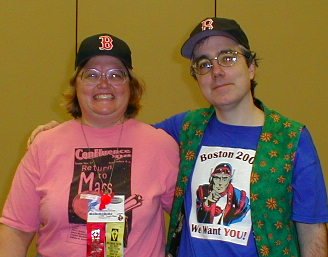Poul Anderson's The Earth Book of Stormgate
The Earth Book of Stormgate by Poul Anderson
When people talk of the “big 3” of science fiction writers, they mean Asimov, Clarke, and Heinlein. But Poul Anderson may very well have been produced more very good material than any of them. Throughout his career, he produced a very large body of work, spanning the SF and fantasy genres. Some of his work is standalone, but much of it falls into a half a dozen or so series (and some of these series are interconnected). One of the best and most popular of his series is that involving the Polesotechnic League. This series, set from the 22nd through about the 26th centuries (the related “Flandry” series is tied to it and covers the time after this) tells of human exploration of the nearby stars and of the alien races we encounter. The key time in this period, and the one in which most of the stories are set – the 23rd and 24th centuries – is dominated by the Polesotechnic League, a group of interstellar trading companies that explore and then exploit (and note that this word is not necessarily to be taken in its pejorative sense, though sometimes that is the case) what they find, setting up trading arrangements with non-humans and with human colonies.
The Earth Book of Stormgate is a collection of short works and one novel set in this universe. All of the stories are at least enjoyable and many of them are very good. The book has framing material from the point of view of what must be
The first story, “Wings of Victory,” tells of mankind’s first contact with the Ythrians.
“The Problem of Pain” examines religious beliefs – human and Ythrian – from
“Margin of Profit” is a fine van Rijn story, showing off his shrewd intelligence and understanding of economics as well as his bargaining skills. An alien race is capturing human ships that pass through an area of space that they claim and enslaving their crews. Van Rijn knows his ships must pass through that area, but the spacers union is refusing. But his skill at economics allows him to solve the problem.
“Esau” (also known as “Homecoming”) also features van Rijn, but in this case in a framing story. Again, an alien power is trying to step in on some of van Rijn’s business, in this case by taking over harvesting on a planet that van Rijn’s company is working. The manager on the spot finds an innovative way to beat them, though in a way that some managers may not like. He’s called home for what he fears is a demotion; instead, Van Rijn, in his usual fashion, praises him and promotes him.
The centerpiece of the book is the van Rijn novel The Man Who Counts (also called War of the Wing Me). Van Rijn and two companions are stranded on the far side of a large, mostly-oceanic planet, where they can’t eat the food and may well starve before they can get a message back to the humans on the other side of the planet. They find themselves in the midst of a war between two nations of winged sentients. Van Rijn uses this fact and his managerial skill to become an important person in one of the nations, something that eventually leads to their helping the humans and saving their lives. This is a fine novel – not
“Day of Burning” features David Falkayn and the crew of the Muddlin’ Through. They have come to the planet Merseia (a planet that is to become a key rival to Earth a few hundred years later, in the Flandry stories) to warn the inhabitants that, in three years time, the planet will be devastated by the output of a nearby supernova, whose light has not year reached them. They are there to help the natives to prepare and thus lessen the problems, but wind up in the midst of a lot of political squabbling. The choices they make eventually do save the planet – but also create the resentments that set the stage for the relationship we see the Flandry novels.
“Lodestar” features both van Rijn and Falkayn, and sets the stage for why the Polesotechnic League eventually fails. The lose alliance and capitalism constrained to some degree by morality and reason is beginning to fray. Laissez faire capitalism is exploiting minor planets or letting others out of the picture if they don’t have the resources. Our area of the galaxy is coming to be dominated by haves and have-notes – the galactic equivalent of economic superpowers and third world countries – and the haves are showing no interest in helping the have notes, just in exploiting them where worthwhile or ignoring them otherwise. Van Rijn and Falkayn are both, in their ways, better than that; van Rijn is a capitalist who wants to squeeze every honest dollar out of every situation he can, but there are lines he won’t cross – this in a situation where more and more companies aren’t drawing such lines. And Falkayn feels for the poorer planets and understands their unrest. The story itself is interesting enough, but it’s most important in that it starts to bridge the gap between the galaxy at the time of van Rijn and that at the time of Flandry.
As I mentioned at the start, all of the stories are at least good and some like The Man Who Counts, “Margin of Profit,” and “Day of Burning” are very good.


0 Comments:
Post a Comment
<< Home